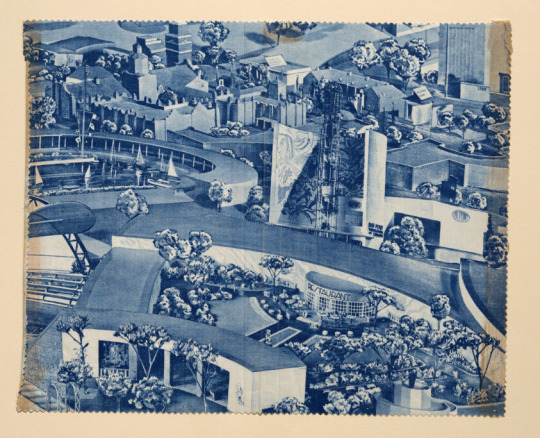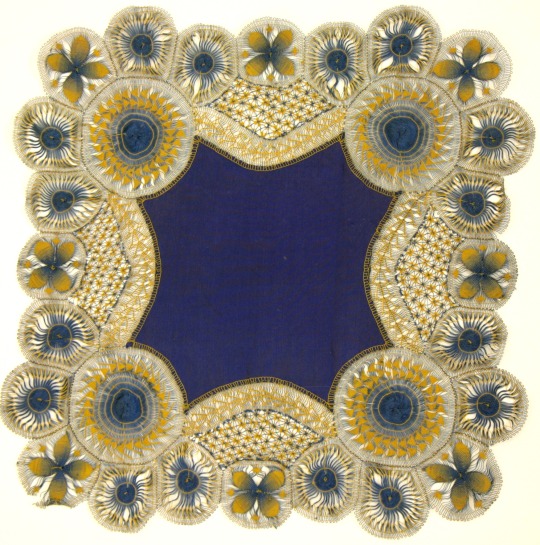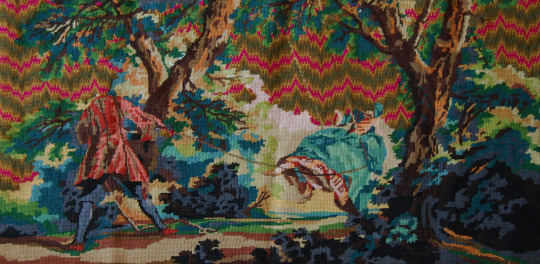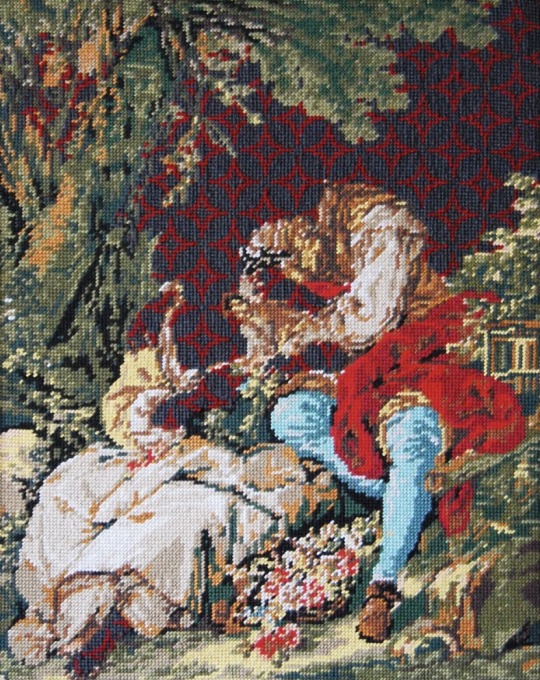#world textile
Text
In his 1956 book The Marlinspike Sailor, marine illustrator Hervey Garrett Smith wrote that rope is “probably the most remarkable product known to mankind.” On its own, a stray thread cannot accomplish much. But when several fibers are twisted into yarn, and yarn into strands, and strands into string or rope, a once feeble thing becomes both strong and flexible—a hybrid material of limitless possibility. A string can cut, choke, and trip; it can also link, bandage, and reel. String makes it possible to sew, to shoot an arrow, to strum a chord. It’s difficult to think of an aspect of human culture that is not laced through with some form of string or rope; it has helped us develop shelter, clothing, agriculture, weaponry, art, mathematics, and oral hygiene. Without string, our ancestors could not have domesticated horses and cattle or efficiently plowed the earth to grow crops. If not for rope, the great stone monuments of the world—Stonehenge, the Pyramids at Giza, the moai of Easter Island—would still be recumbent. In a fiberless world, the age of naval exploration would never have happened; early light bulbs would have lacked suitable filaments; the pendulum would never have inspired advances in physics and timekeeping; and there would be no Golden Gate Bridge, no tennis shoes, no Beethoven’s fifth symphony.
“Everybody knows about fire and the wheel, but string is one of the most powerful tools and really the most overlooked,” says Saskia Wolsak, an ethnobotanist at the University of British Columbia who recently began a PhD on the cultural history of string. “It’s relatively invisible until you start looking for it. Then you see it everywhere.”
— The Long, Knotty, World-Spanning Story of String
#ferris jahr#the long knotty world-spanning story of string#history#prehistory#marine history#naval history#textiles#clothing#agriculture#architecture#sculpture#botany#ethnobotany#stonehenge#giza pyramid complex#moai#hervey garrett smith#saskia wolsak#string#rope
3K notes
·
View notes
Text

everywan…… look at this lovely commission i got from @tomoyoo of sasuke weaving a tapestry at his loom ♡
[ ID: a full body digital drawing of sasuke kneeling in front of a large wooden tapestry loom. he has tan skin, moles, top surgery scars and is wearing his early shippuden outfit. he his half finished weaving a tapestry of a hawk soaring through the sky. the ground below him is yellow and fades into a white background. he has a basket of yarn by his side. END ID. ]
#THANK YOU SO MUCH MIMI THIS MEANS THE WORLD TO ME#everyone should go give mimi love and support ♡ her art is wonderful#i hold this so closely to my heart#i’ve literally cried looking at this piece so many times already because it’s so important to me#sasuke doing textile arts is SO important to me#and TRANS sasuke doing textile arts…………. this is THE most important thing in the world to me#i can’t stop looking at this piece#mimi the details and effort you put into this is ASTOUNDING and i couldn’t be happier with how it turned out#i cherish this so so dearly :3#naruto#uchiha sasuke
591 notes
·
View notes
Text
how does antiquing work in Star Trek?
like, okay, there's no scarcity Because Replicators. great! except you can't replicate an antique, not the real thing. probably some AMAZING reproductions- 24th-century historical costumers must be having the time of their lives, because as great as modern synthetic baleen is, imagine what you could do with a machine that literally replicates the exact molecular structure of the same! or that extinct flax that made medieval linen so great! -but I know antique collectors. there's nothing like the feeling of something you know so many other people have loved for centuries
is it like a barter system? do you go to the antique "shop" with things passed down in your family or found in the equivalent of a Facebook buy-nothing group, and trade what you have for what the history nerd running the place has based on your respective interests?
is Brimfield like a giant swap meet? could I go with, say...a big bag full of my grandmother's chunky 1950s costume jewelry and trade it for 1880s blouse waists because the stall owner wants the former and I want the latter? equivalent value wouldn't matter- what's value, beyond how much you treasure something? nobody's got rent to make or bills to pay, after all
do people become antiques "dealers" just for the thrill of the hunt and the pleasure of matching an object to someone who will love it? you don't have to work, after all; you can spend your whole life searching the world for rare treasures if that brings you joy
this is a nice thought
#star trek#worldbuilding#oh my god think of the wonderful materials you could have at your disposal to make clothes out of though#with replicators#as much merino and silk-velvet and cashmere as you wanted. aforementioned Good Linen. the lightest#sheerest voile imaginable#forget pajama jumpsuits; their world could gain back some of the sensory textile richness ours has lost#furs- anything you wanted! from any animal! because it's not FROM the animal but it's exactly the same!#it's not 'faux fur' made of plastic- it IS the real thing#hi my name is Marzi and I grew up on TNG but internalized NONE of the aesthetic and got bored in the battle scenes
399 notes
·
View notes
Text
I’m glad I sat on the book for a bit, because now I’m like 👀 parts of this worldbuilding exist in my head, but are never explicitly stated, and so will seem like massive glaring holes to anyone reading. I’m going full geek now and making a map with all the divided territories etc, so I can go through in one last juicy editing spree and solidify this world.
people like opening a book and immediately seeing a map, right? what kind of half assed fantasy doesnt have a map?
#would appreciate advice though!#have you ever been reading a story and been like 'Jesus Christ they dont even talk about the textile industry'#or some other world building detail and it completely took you out of it?#I want to hear your complaints!!#trying to strike a balance between 'fleshing out the world' and 'killing people with needless exposition'
1K notes
·
View notes
Text


tulip anatomy
x
453 notes
·
View notes
Text

Hey blog 👋
(IS THIS BLURY!!?)
#envy adams#envy adams Scott pilgrim#Scott pilgrim#Scott pilgrim vs the world#scott pilgrim fanart#Scott pilgrim takes off#digital art#digital drawing#art#fanart#idk#help I’m in textiles
63 notes
·
View notes
Text


Beyoncé in a photo from her Renaissance World Tour 2023 book, wearing a circuit board print bodysuit from Lee Alexander McQueen's FW99 collection for Givenchy.
Styled by Marni Senofonte.
#beyoncé#beyonce#fashion#renaissance tour#renaissance world tour#marni senofonte#givenchy#1990s#fashion history#1999#fw99#pattern#surface pattern#surface pattern design#pattern design#textile design#textiles#print#printed textiles#runway#circuit board#motherboard#computer#y2k#lee alexander mcqueen#alexander mcqueen
361 notes
·
View notes
Text

(2012) World Map, old world style. This is one of the few pieces where I actually kept track of how long it took me, which was, 36 weeks, assuming 7 hours/week (1 hour daily). So, approx 252 hours.
Which is why my parents saying "Oh, you could sell that!" is so disingenuous. No I couldn't. Not for anything like the value of the labor.
This piece includes seed beads, blending filament, and metallic threads, all of which are much easier to see in real life.
#cross stitch#my art#laridian crafts#world map#maps#repostober#finished piece#textile art#embroidery
87 notes
·
View notes
Text
I was always enraged at the way capitalism has devalued some of the most important labour in human history, but now I'm even more angry since I have started getting more into crafts.
So many people are alienated from the world to such an extent they don't realize how fucking important textiles and construction and art and culinary labour is, because its all ubiquitous under capitalism: it is all profit, and if it isn't profit, then it is worthless. People don't realize just how revolutionary all of the labour was, how important it is, and was, to our survival. And that enrages me.
#politics#anti capitalism#the reason you have people going 'would it be $20 if you knit me a sweater' is because of that alienation...#...because of the fact that they're not used to non-exploitation and the fact that textiles are fundamental to humanity...#...because capitalism has so alienated them from the world around them they don't understand what goes INTO textiles...#...they only know that sweaters cost $20 at walmart and that price is rational for them#and that isn't to say that they are at fault but that they are the result of capitalistic alienation and exploitation#like i'm sorry for posting so much about crafts and shit but it really makes me think more about all of this you know?#and it's just made me think that all of this is so much deeper#DOES THIS ALL MAKE SENSE....#i feel like no-bark noonan right now the way i am raving and ranting#the hobbyist crafter to even stauncher anticapitalist pipeline has fucking yeeted me through#yes i'm aware of karl marx's theory of alienation and i'm saying he was onto something
118 notes
·
View notes
Photo

World’s Fair Textile
1939
Produced by the Seneca Textile Corporation
United States, New York
(Some of the buildings represented would have been designed by my grandfather)
175 notes
·
View notes
Text



Paraguayan ñandutí (spiderweb) lace from the collection of Jan and Marshall Johnson, photographed by Gail Harker
#ñandutí#lace#textile art#paraguay#latin america#latin american art#art history#world art#south american art
158 notes
·
View notes
Text








Needlepoint embroidery (found works made from hobby kits, unpicked and reworked) by Matt Smith.
#interesting how these works by named artists are translated into hobby kits for unknown amateurs to work#& then are reworked by a named male artist and move back into the art world#read an interview w matt and he’s a cool guy with a lot of admiration for the women in his family who taught him to sew from a young age#he also works with ceramics#matt smith#same name as the actor and this is why parents w super common surnames have to dig a little deeper than the bible boys#if they don’t want this scenario to happen.#matt j smith#embroidery#needlepoint#needlework#textile art#surreal#surrealist#surrealism#fave art
221 notes
·
View notes
Text
The "ancient high tech civilization" trope that SFF likes to play with a lot is cool and all, but sometimes I wish there'd just be more general love for "ancient different tech civilization" and it's still weird as hell to the contemporary characters but, like, not all modernity/tradition-y about it.
#This post brought to you by me thinking about how textile materials were largely regionalized for a lot of human history#could you imagine being a person from. idk. the linen part of the world seeing someone wearing kapa for the first time#That combined moment of what the Fuck are you wearing??? and YOOOOO that is so cool!!!#Alternatively: 'what's that?' 'database says it's a plough' 'not like any plow I've ever used' 'then you'd have been a shit farmer here'
23 notes
·
View notes
Text

06-07-23
Why Patagonia helped Samsung redesign the washing machine
Samsung is releasing a wash cycle and a new filter, which will dramatically shrink microfiber pollution.
Eight years ago, Patagonia started to study a little-known environmental problem: With every load of laundry, thousands (even millions) of microfibers, each less than 5 millimeters long, wash down the drain. Some are filtered out at water treatment plants, but others end up in the ocean, where fibers from synthetic fabric make up a surprisingly large amount of plastic pollution—35%, by one estimate. Fragments of your favorite sweatshirt might now be floating in the Arctic Ocean.
In a collaboration that began two years ago, the company helped inspire Samsung to tackle the problem by rethinking its washing machines. Today, Samsung unveiled its solution: A new filter that can be added to existing washers and used along with a “Less Microfiber” cycle that Samsung also designed. The combination makes it possible to shrink microfiber pollution by as much as 98%.
[…]
Patagonia’s team connected Samsung with Ocean Wise, a nonprofit that tests fiber shedding among its mission to protect and restore our oceans. Samsung shipped some of its machines to Ocean Wise’s lab in Vancouver, where researchers started to study how various parameters change the results. Cold water and less agitation helped—but both of those things can also make it harder to get clothing clean.
“There are maybe two ways of increasing the performance of your washing machine,” says Moohyung Lee, executive vice president and head of R&D at Samsung, through an interpreter. “Number one is to use heated water. That will obviously increase your energy consumption, which is a problem. The second way to increase the performance of your washing machine is to basically create stronger friction between your clothes . . . and this friction and abrasion of the fibers is what results in the output of microplastics.”
Samsung had already developed a technology called “EcoBubble” to improve the performance of cold-water cycles to help save energy, and it tweaked the technology to specifically tackle microfiber pollution. “It helps the detergent dissolve more easily in water so that it foams better, which means that you don’t need to heat up your water as much, and you don’t need as much mechanical friction, but you still have a high level of performance,” Lee says.
The new “Less Microfiber” cycle, which anyone with a Samsung washer can download as an update for their machine, can reduce microfiber pollution by as much as 54%. To tackle the remainder, the company designed a filter that can be added to existing washers at the drain pipe, with pores tiny enough to capture fibers.
They had to balance two conflicting needs: They wanted to make it as simple as possible to use, so consumers didn’t have to continually empty the filter, but it was also critical that the filter wouldn’t get clogged, potentially making water back up and the machine stop working. The final design compresses the microfibers, so it only has to be emptied once a month, and sends an alert via an app when it needs to be changed. Eventually, in theory, the fibers that are collected could potentially be recycled into new material rather than put in the trash. (Fittingly, the filter itself is also made from recycled plastic.)
When OceanWise tested the cycle and filter together, they confirmed that it nearly eliminated microfiber pollution. Now, Samsung’s challenge is to get consumers to use it. The filter, which is designed to be easily installed on existing machines, is launching now in Korea and will launch in the U.S. and Europe later this year. The cost will vary by market, but will be around $150 in the U.S. The cycle, which began to roll out last year, can be automatically installed on WiFi-connected machines.
#microplastics#textiles#laundry#environmental#science#patagonia#samsung#i'm. so excited.#also i HAD been silently judging patagonia a little for their heavy use of synthetics but. they ARE walking the walk actually.#(will say that ime the feel of natural fibers is just. better.)#(like. wool has an astonishing ability to keep you warm-but-not-sweaty at a bizarrely wide range of temps)#(whereas like. the synthetic fleece tops i still have are like. immediately cozy‚ sure‚ but you WILL get sweaty if you get warm)#(like being in‚ you know‚ a plastic bag!)#(so like. even if they Fix the Microplastics Problem i have no regrets abt switching my allegiance to woolens)#(but. still fucking THRILLED they might fix the microplastics problem.)#does make you feel like. i'm unavoidably a humanities person but. what are humanities ppl doing that matters this much.#like fundamentally if you really want to do good in the world you probably SHOULD become a scientist of some kind.#that said‚ science would almost certainly not be improved by my participating in it‚ so like. what can you do.#really hugely awed by & appreciative of scientists tho.#anyway. obvs this is really just a press release and we gotta see how this plays out but.#!
58 notes
·
View notes
Text
#WorldFrogDay fashion accessory: 🐸👛

Frog Purse
Europe, 17th century
silk and metal threads, silk floss, silk fabric, leather (possibly), wire and glass beads; detached needlepoint, laid and couched stitches
L 8 x W 6 x D 2 cm
Ashmolean Museum
#frog#amphibians#historical costume#accessories#purse#European art#17th century art#Ashmolean Museum#textiles#animal holiday#World Frog Day#animals in art
112 notes
·
View notes
Text
it makes me sad how often textile arts are ignored as actual art forms, and are relegated to the disregarded realm of 'old lady hobbies'. there is so much skill involved, such a broad diversity of forms, but so many people straight up do not think of things like crochet or quilting as art.
#i mean apprenticing with a textile artist as a teen definitely changed how i view quilts and tapestries#before then i had never really realized what was possible or what was involved in creating these things#but i think everyone should at least be taught how to sew and either knit or crochet as a child.#that should just be part of standard school curriculum.#textile art should be taught as a unit in art classes right alongside oil painting - the history of goes back even farther and is so#culturally important to literally every culture in the world and yet it is almost never considered academically the way paintings are.
34 notes
·
View notes